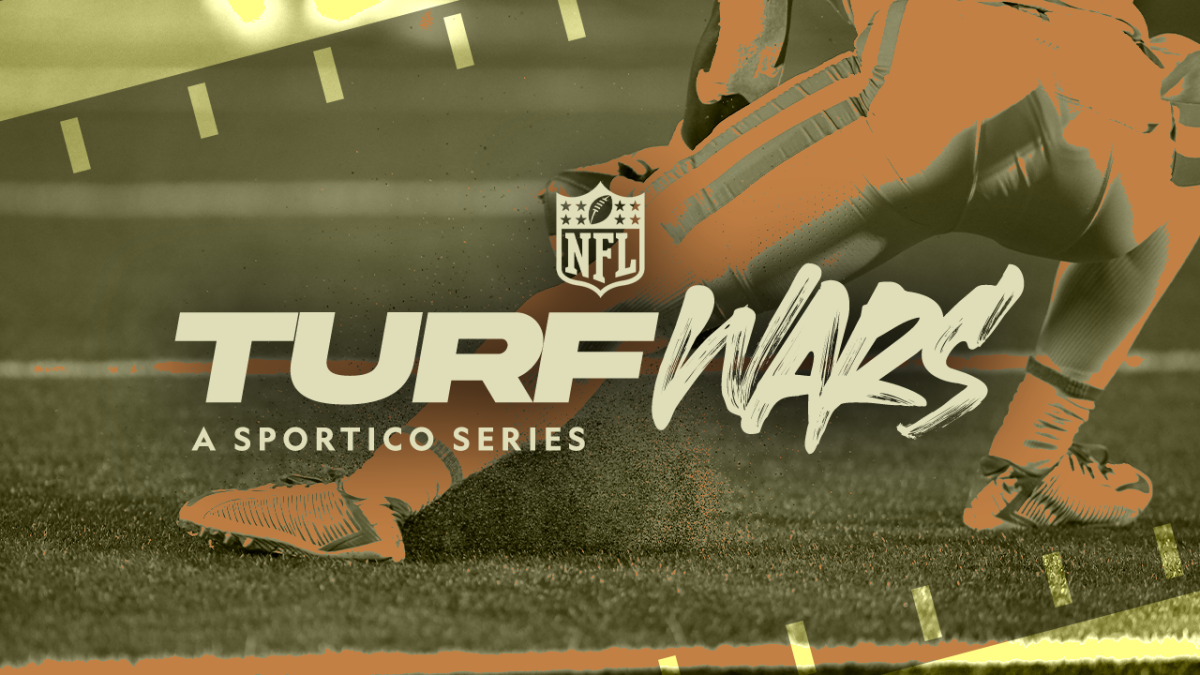This is the first story in Sportico’s Turf Wars series, examining the business decisions behind choosing natural grass or artificial turf for an NFL stadium.
The NFL built the world’s most valuable sports league largely via forced uniformity. Teams share most revenue evenly, they sell all their media rights as a single entity, and every franchise adheres to the same hard salary cap. It’s unlike any other major U.S. league.
More from Sportico.com
And yet NFL franchises differ significantly in their approach to one of the sport’s most elemental necessities—the playing surface itself. About half the league’s teams play on natural grass, different strains grown in different parts of the country. The other half plays on artificial turf, different types made by different companies around the world.
A longtime point of contention between players and owners, the issue has come to a head in recent years. Players overwhelmingly prefer grass—92% of them, according to the NFLPA. The athletes say it’s easier on their bodies and believe it leads to fewer serious injuries. Last year, union executive director Lloyd Howell said ridding the game of artificial turf entirely is the “easiest decision the NFL can make.” The looming 2026 men’s World Cup, where 11 NFL venues will all install grass fields, threatens to further stoke the debate.
Owners have their own motivations. Grass is slightly more expensive on its face, and it’s much harder (maybe impossible) to maintain amid the rush of non-NFL events at stadiums that contribute tens of millions to some franchises’ bottom lines. The league also disagrees with the union about the relationship between artificial turf and injuries.


Over the next week, Sportico will break down the NFL’s ‘Turf Wars,’ one blade at a time. On Wednesday, we’ll explore the economics for owners. On Thursday, we examine the health and legal concerns. On Friday, we’ll profile some of the leading companies in the business of playing fields, and over the weekend we’ll look ahead at the research being done to further advance the surfaces in the next decade.
But first, here’s what the NFL is doing right now. The league’s Field Surface Safety & Performance Committee, comprised of representatives from the NFL, NFLPA and outside experts, is working to create some consistency across the league’s many different playing surfaces. The six-person group, which dates back to 2016, is trying to “give us the best possible product for our athletes and our fans come game day,” according to Nick Pappas, the NFL’s field director.
That’s developing new testing devices, promoting innovation for both natural grass and artificial turf, and developing the league’s first set of published standards about what an NFL field should be. Global governing bodies in sports like soccer and rugby have set rules about field composition and performance specifications. The NFL does not.
“The challenge for us is that our athletes are unique—we’ve got some of the biggest, fastest, strongest athletes in the world,” Pappas said in an interview. “We couldn’t just go grab FIFA’s Quality Programme standard or the World Rugby standard. It doesn’t work for our game, and it doesn’t work for our athletes. We need to start from ground zero.”
The hope, according to Pappas and others around the NFL, is to follow the playbook the league used to overhaul helmet safety and innovation over the past decade. The league’s Head, Neck and Spine Committee, a collaboration with the union, has pushed to change rules, surveyed players and analyzed data. The league offered millions in grants to companies that could improve helmet performance, then published new standards. The league and union currently rank helmets each year for players, position by position.
For playing surfaces, some early progress was unveiled in the past month. Last week the league announced $100,000 in grants to two groups whose technology could help make fields more consistent. The league and union also just helped develop a new piece of equipment, called a “strike device,” that Pappas said provides granular data about how a field absorbs energy.
The strike device will be incorporated into gameday field requirements that right now are fairly limited. Every Sunday, teams submit to a gameday certification, mandated by the league and union for more than a decade, that primarily tests the hardness of the natural grass or artificial turf. There are also grass-specific metrics (such as moisture and shear strength) and artificial turf-specific metrics (such as infill depth), that the league keeps an eye on.
Soon, however, the NFL is hoping to have a much more comprehensive, consistent approach to both surfaces. That’s something it has lacked since the advent of AstroTurf a half-century ago, though it’s unlikely to fully quell the debate over which is more appropriate for a league with roughly $20.5 billion in annual revenue.
“Moving forward, we want to work with the sod farmers, and we want to work with the [artificial turf] manufacturers within the framework of an NFL standard,” Pappas said. “If you guys can grow grass to this standard, and our field managers can manage it to that standard, fantastic. And if you want to be an artificial manufacturer, get your product in front of us, let’s look at them and test them.”
Best of Sportico.com
Sign up for Sportico’s Newsletter. For the latest news, follow us on Facebook, Twitter, and Instagram.

